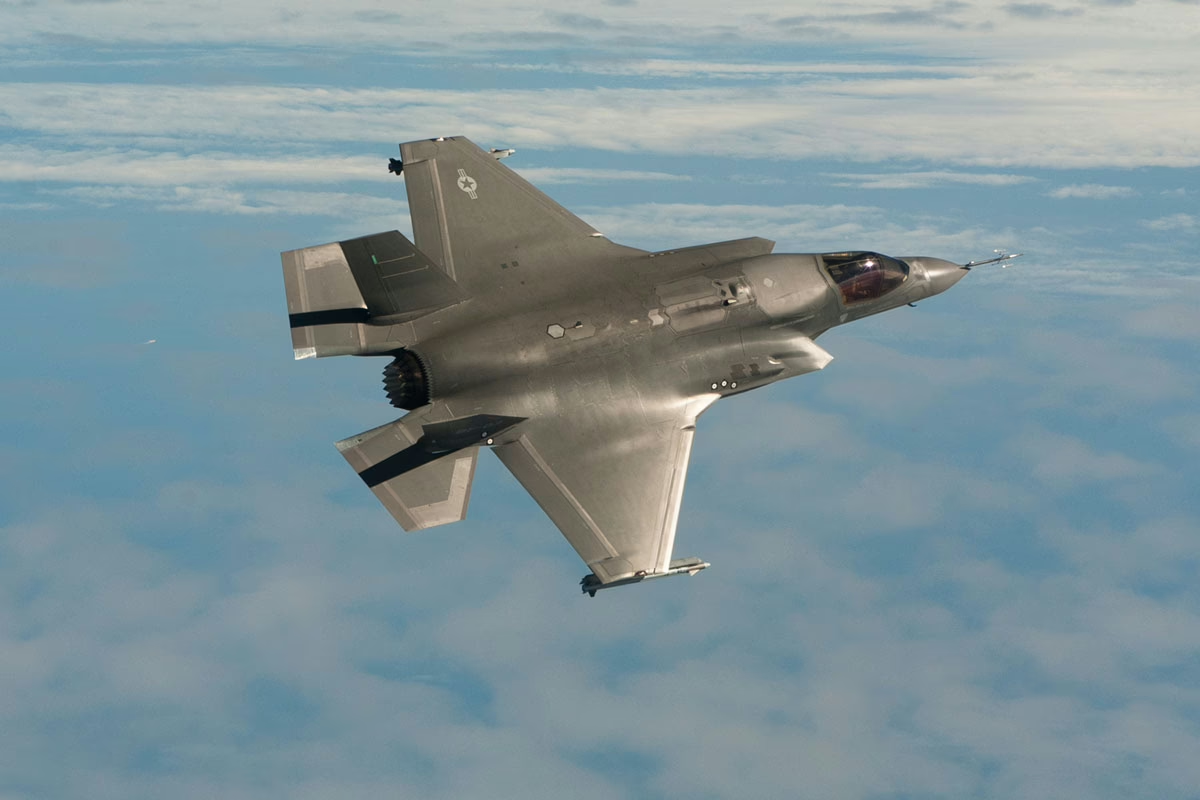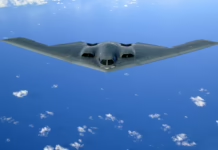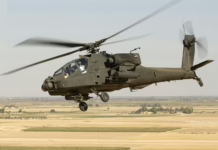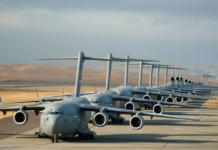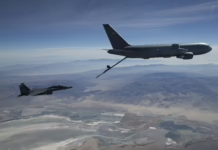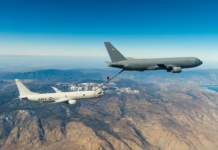President Trump’s F-35 approval for Saudi Arabia signals major policy shift as Gulf states pursue diverse defense partnerships and European fighters capture record orders.
The White House greenlit the export of F-35A stealth fighters to Saudi Arabia on Nov. 17, marking the first time a Gulf nation will receive America’s most advanced combat aircraft in a move that signals Washington’s evolving Middle East strategy.
President Donald Trump made the announcement ahead of Crown Prince Mohammed Bin Salman’s arrival in Washington the following day, calling Saudi Arabia a “great ally” that seeks to purchase the fifth-generation jets. The White House followed with a formal notification of a broader defense package sale that includes the Lockheed Martin-built fighters.
Details remain sparse on the agreement’s scope, financial terms and weapons systems involved. Congressional lawmakers must still approve the transaction, where they will weigh whether to transfer cutting-edge military technology to the region.
The Saudi decision arrives five years after Trump’s first administration authorized a $10.4 billion package sending 50 F-35As to the United Arab Emirates. That deal came after the UAE joined the Abraham Accords, becoming the first Gulf state to establish diplomatic ties with Israel through U.S. mediation.
Yet the UAE transaction stalled when President Joe Biden froze the export license in September 2021, pointing to Abu Dhabi’s deepening military cooperation with China. Evidence of that partnership was on display at last month’s Dubai Airshow, where the UAE’s Fursan Al Emarat aerobatic team flew the Chinese-made Hongdu L-15 in its debut public performance after announcing the purchase two years earlier.
After Washington rejected the F-35 sale, Emirati officials cooled on the fighter. Last September, the UAE definitively closed the door on reviving negotiations even if Trump returned to office. Abu Dhabi has long maintained a balanced procurement strategy, alternating between American and French suppliers, though officials have recently broadened their options beyond traditional partners.
At the Dubai show, Lockheed Martin’s Steve Sheehy, vice president for international business development in the Aeronautics division, carefully sidestepped questions about the Saudi announcement. “All I can say is President Trump made the announcement,” Sheehy told Aviation Week. “We appreciate, you know, his supporting of the F-35 program.”
How the potential Saudi purchase might reshape competition for other major contracts in the kingdom remains uncertain. Boeing’s F-15EX, the Eurofighter Typhoon and Dassault’s Rafale are all vying for substantial Saudi orders. Riyadh could opt to diversify its fleet with multiple aircraft types.
Saudi officials have also expressed interest in joining next-generation fighter development programs now emerging in the United States and Europe. The high classification surrounding U.S. initiatives could push Saudi Arabia toward European collaboration on existing platforms as an entry point into future programs.
While Gulf nations navigate their procurement strategies, the broader fighter market experienced extraordinary momentum through mid-November. France and Ukraine formalized plans for Kyiv to acquire 100 Rafale F4 jets when presidents Emmanuel Macron and Volodymyr Zelenskyy signed a declaration of intent at Villacoublay air base on Nov. 17.
The transaction could exceed €12 billion ($13.9 billion), representing Dassault Aviation’s largest export contract by aircraft count.
“This moment is something special and truly historic for both nations . . . new planes, new reinforcements, new steps to strengthen our army and our country,” Zelenskyy said.
Beyond the fighters, the agreement encompasses possible technology sharing and manufacturing operations inside Ukraine. Weapons packages will include air-to-air missiles and precision-guided munitions. Ukraine already employs France’s Safran Hammer guided bomb system and will receive additional units.
The deal also brings Eurosam SAMP/T NG ground-based air defense batteries and radar systems to Ukraine. Joint production initiatives will launch this year, focusing on affordable interceptor drones and “development of critical technologies and components that can be integrated into Ukrainian drones,” according to Zelenskyy.
Ukraine signed a separate letter of intent with Sweden in late October covering the acquisition of up to 150 single-engine Saab Gripen E fighters. The arrangement includes possible surplus Gripen C/D models from the Swedish inventory to accelerate Ukrainian familiarization with the platform. First Gripen E deliveries could begin within three years, officials said.
Financing remains a significant challenge for both Ukrainian fighter programs, given the contracts’ combined value and Kyiv’s strained economy. Officials are exploring mechanisms to access frozen Russian assets held in European financial institutions.
Ukraine requires modern combat aircraft with or without a negotiated settlement to counter Russian air power. The country’s aging Soviet-designed fleet—Sukhoi Su-24s, Su-25s, Su-27s and Mikoyan MiG-29s—has grown obsolete. Even secondhand F-16s arriving from Belgium, Denmark and the Netherlands, along with French Mirage 2000s, may struggle to remain effective against upgraded Russian fighters over time.
Sweden’s Saab also completed a €3.1 billion contract with Colombia just before the Dubai show opened, covering 17 Gripen E/F aircraft—15 single-seat E models and two two-seat F trainers. Deliveries spanning 2026 through 2032 will replace Colombia’s dated Israel Aerospace Industries Kfir fleet.
The Colombian agreement caps a busy year for Gripen sales that included Thailand finalizing a four-aircraft purchase in August, with plans for additional orders. Saab CEO Micael Johansson acknowledged the company must expand production capacity to meet demand and may establish a third final assembly site. Eurofighter and Dassault face similar pressures from growing order backlogs.
Brazil’s Embraer, currently assembling 15 Gripen Es for its own air force, will build part of Colombia’s fleet at its Gaviao Peixoto defense facility. The remaining aircraft will arrive from Saab’s Linköping, Sweden, production line.
Additional major deals through mid-November included the Pentagon’s selection of Boeing to manufacture the F-47 and Turkey’s commitment to purchase 20 Eurofighter Typhoons.
Russia’s Sukhoi Su-57 made its third international appearance at Dubai—and revealed its internal weapons bays publicly for the first time. Rostec CEO Sergey Chemezov claimed the aircraft faces “huge demand” from prospective customers but declined to confirm whether Algeria, widely considered a likely buyer, has placed an order.
The single-engine Su-75 “Checkmate,” unveiled as a mockup at the 2021 Dubai show, is advancing toward its maiden flight four years later, Chemezov said.

Key Takeaways
- President Trump authorized the first F-35 export to a Gulf state, with Saudi Arabia poised to receive the advanced fighters after congressional review, as the UAE pursues alternative partnerships, including Chinese aircraft acquisitions.
- Ukraine’s commitment to acquire up to 250 Western fighters—100 French Rafales and as many as 150 Swedish Gripens—represents contracts potentially exceeding $25 billion in the largest wartime fleet modernization since World War II.
- European manufacturers captured significant market share with Saab securing Colombian and Thai orders while Dassault won its biggest Rafale export contract, intensifying pressure on U.S. defense companies competing globally.


